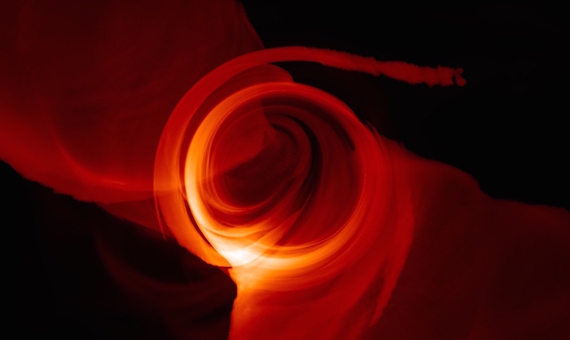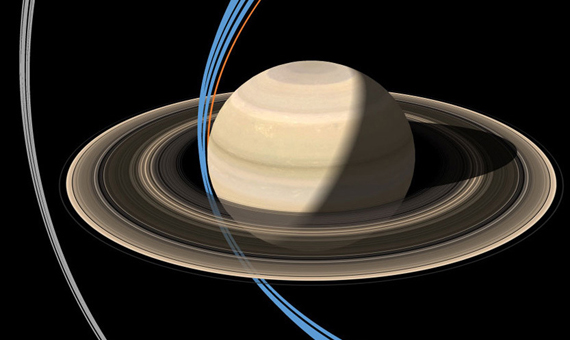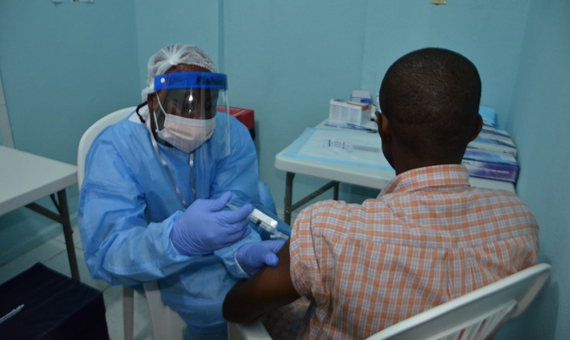We unveil a calendar with 365 blank pages to fill with science. Every year, the most revolutionary advances and the most surprising scientific stories come to us without warning, but there are already some highlights marked on the pages of the year that has just begun. These are some of the news stories that the world of science will bring us in 2017.
The first photo of a black hole
A black hole is almost by definition something we cannot see, given that light does not escape from one and thus cannot reach our eyes or scientific instruments. And yet, when physicists represent a black hole, they paradoxically show us an enormously luminous mass —it is the light of the material drawn into that blackness that is immensely dense, but incredibly small. If we could approach the black hole, we would be able to admire that boundary called the event horizon, beyond which there is no escape, and we could observe the hot gas spinning as it falls into that cosmic trap.

Perhaps in 2017 we can stop imagining and actually see it with our own eyes. This is the purpose of the Event Horizon Telescope, not a telescope as such, but rather a network of radio telescopes dispersed across the planet that in practice amount to a single observatory with the diameter of the Earth. With this brilliant approach, project managers hope to get the first picture of the Sagittarius A* event horizon, the supermassive black hole located in the centre of our galaxy.
Solar System News
Also in space, but in the more intimate surroundings of our own Solar System, we are awaiting some exciting firsts. NASA’s Juno spacecraft, the most distant solar-powered device ever sent into space by humans, and the second that has entered Jupiter’s orbit after Galileo in 1995, is constructing a 3D map of the interior of the gaseous giant. Perhaps the information provided by Juno can finally answer one of the great questions about Jupiter: whether it hides a solid core in its interior.
As Juno continues its work on Jupiter, on its neighbouring planet another space probe will put an end to a mission of almost 20 years. On September 15, NASA’s Cassini spacecraft will plunge toward Saturn to be crushed by the pressure. But before that happens, the engineers of the American agency will take advantage of its final months to entrust to Cassini a risky mission: to insert itself into the gap of 2,400 kilometres that separates Saturn from its rings in order to complete 22 orbits, each taking six days to complete, before the grand finale. The data collected by the probe during these low-altitude flights will bring us closer to Saturn than ever before.

One of the most anticipated space missions of 2017 will be launched on an undetermined date from the tropical island of Hainan in the South China Sea. The Chang’e-5 will land on the Moon to collect about two kilos of rocks and dust, take off again and bring the material back to Earth. China has previously landed on the Moon, but this will be its first sample- return mission. In fact, it will be the first probe to bring back lunar rocks since the Soviet Luna 24 in 1976.
The Trump era
But perhaps the greatest scientific uncertainty of the new year is one that comes from the world of politics. The start of President-elect Donald Trump’s mandate will begin to confirm or mitigate fears that the United States will begin to step back from its climate commitments, precisely in a year that could offer a misleading impression of climate change: with the El Niño phenomenon coming to an end, experts warn that 2017 could bring cooler weather than the previous year.
Climate scientists are not the only ones who fear a slowdown in their research with Trump’s entry into the Oval Office. If the new president yields to the pressures of some religious groups, research with human embryonic stem cells could also suffer a setback. Meanwhile, across the Atlantic, 2017 will see the birth of the first babies conceived by legally sanctioned mitochondrial donation. This technique, which replaces the defective mitochondrial DNA of the mother with that of a healthy donor, has already been used in other countries by taking advantage of legal loopholes. The United Kingdom has been the first country to legally authorize what is popularly known as “children with three parents.”
Genes against cancer
Biomedicine will bring other promising breakthroughs in the new year. The CRISPR genomic editing tool, hailed as the great genetic-engineering revolution of the early 21st century, should begin to demonstrate its potential in its first clinical trial in the Western world. China has already taken the lead in this area, but the cancer trial approved last June in the US will serve to assess whether CRISPR will be able to replace other genetic tools currently being tested.

Another long-awaited medical weapon is already a reality: the rVSV-EBOV vaccine against the Ebola virus closed the year 2016 with 100% success. If, in 2017, its effectiveness is also confirmed in children and vulnerable people, such as those infected by HIV, the vaccine could enter the approval process, which now places on the horizon the possible triumph over one of the most feared diseases of recent years. A different case is that of the Zika virus, which still infects thousands and will continue to cause microcephaly and other malformations in foetuses. In 2017, work will continue on the development of vaccines, but massive immunization against the virus will still have to wait.
Solar antics
Finally, the total solar eclipse that will cross the US on August 21 in a diagonal line from northern Oregon to South Carolina will undoubtedly offer some of the most viral scientific images of the year. Europeans will not be so fortunate, but those who inhabit the western fringe of the continent, west of the line linking Oslo with the Spanish Mediterranean coast, will enjoy a partial eclipse. In Iceland, Ireland and northern Britain people will be able to see the eclipse from beginning to end, but in the rest of this zone they will be able to experience an even more striking phenomenon, since the eclipse will coincide with dusk. And if a sunset is always a beautiful thing to see, a setting sun with a bite taken out of it might be a once in a lifetime sight.
Comments on this publication